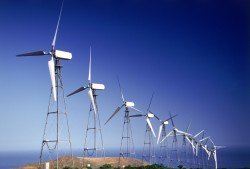The Cape Wind Energy Project (CWEP), once at the vanguard of offshore wind power in the United States, but since 2015 virtually dead in the water, recently received a small vote of confidence from the Department of the Interior’s Bureau of Ocean Energy Management (BOEM). In response to a July 2016 court order that required an improved geological assessment in BOEM’s 2009 Final Environmental Impact Statement (FEIS) for the CWEP, the BOEM has issued a Record of Decision (ROD) affirming its 2010 issuance of a lease for the project. The ROD states that information submitted by Cape Wind Associations (CWA), the entity seeking to build the wind farm, indicates that the seafloor in the lease area will support CWEP’s proposed 130 wind turbines. Whether this conclusion will reinvigorate the project remains to be seen.
Powerful supporters and opponents
CWA filed its initial permit applications to federal agencies in 2001. As designed, the project would have the capacity to generate 468 megawatts (MW) of wind power. The average production was expected to be 174 MW, which is almost 75 percent of the 230 MW average electricity demand for Cape Cod and the islands of Martha’s Vineyard and Nantucket.
Over the years, the CWEP has experienced tumultuous ups and downs, including an endorsement from the Obama administration and ex-Massachusetts Governor Deval Patrick, along with unrelenting opposition from local communities, the late Senator Ted Kennedy, former Senator John Kerry, and former Governor Mitt Romney. Much of the opposition stems from the belief that the turbines will detrimentally affect the natural aesthetics of the Cape Cod area, endanger sea birds, cause problems for vessels, and violate the sacred grounds of an Indian tribe.
In 2015, several power companies that had previously agreed to purchase power from the CWEP terminated the agreements. Since then, CWA’s website has ceased releasing updates on the project. A local news organization reported in August 2017 that CWA’s CEO still believes the project is viable. CWA holds the lease for the project until 2041.
Appropriate for seafloor conditions
The latest ROD was developed following the ruling of the U.S. Court of Appeals for the D.C. Circuit in Public Employees for Environmental Responsibility v. Hopper. The court found that the BOEM did not fulfill its duty under the National Environmental Policy Act (NEPA) to take a “hard look” at the geological and geophysical environment of Nantucket Sound and, therefore, did not consider every significant aspect of the environmental impact of the project.
In March 2017, the BOEM published a draft supplemental Environmental Impact Statement (EIS) on the geological issues of concern. The BOEM reports that it received 581 “submittals” on the draft. Following review of the comments, the BOEM states in the ROD that it has not changed the position on environmental effects it took in the 2009 FEIS. The BOEM concludes:
“The project was designed to be appropriate and suitable for the seafloor conditions of the project area, and has been determined as conforming to industry standards by an independent certified validation agent. There is no evidence to suggest the seafloor would be unable to support turbines for this project design.”

